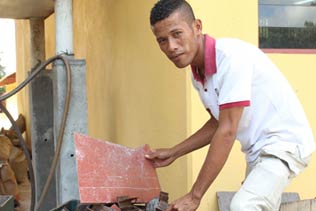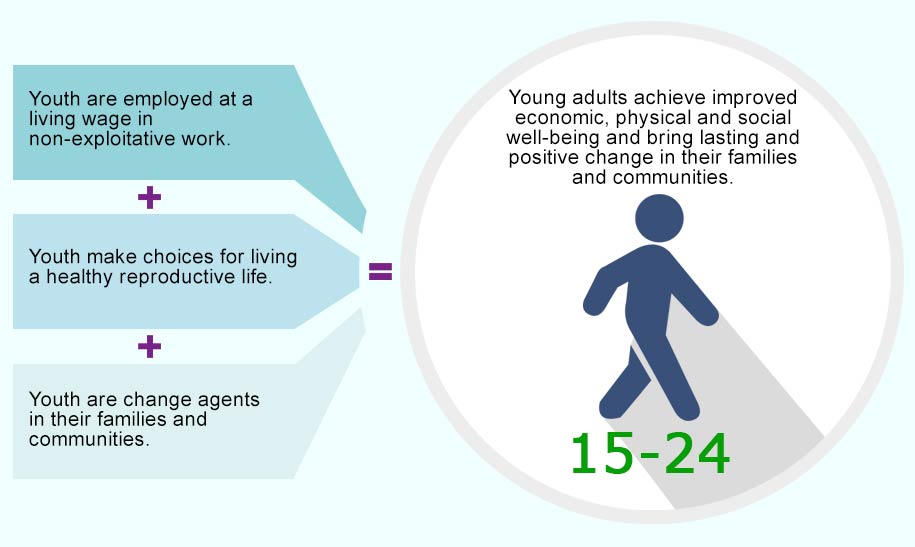Site will be
unavailable for maintenance from June. 4, 11:30 p.m., to June 5, 12:30 a.m. ET. Thank you for your
patience!
Ages 15 to 24

YOUTH: Every Stage of a Child's Life Provides the Key to the Next
When we say that children are our future, we see our future at our doorstep in the sheer proportion of the world’s young people who are between the ages of 15 and 24 —1.2 billion.
Ninety percent of these young men and women live in developing countries. This group represents 25 percent of the world’s population … and nearly half of the world’s unemployed.

Domingos, 24, recently graduated from a training center in Tibar, Timor-Leste, with a certificate in welding.
They are diverse, vibrant and, at times, challenging. And they are critical partners in a country’s development.
But poverty, social exclusion and vulnerability threaten their potential.
The sheer numbers of youth in developing countries and the few jobs available there mean that many young people are excluded from opportunity altogether or working in conditions where they are at risk of exploitation and abuse. Many more youth left idle are prone to risky behaviors. Every day, 20,000 girls under 18 in developing countries give birth, effectively limiting young women’s educational and employment opportunities and posing grave health risks for themselves and their children.
ChildFund’s Theory of Change for Ages 15 to 24

Our Approach
Youth is a critical period of transition to adulthood that can lay foundations to success or reinforce the generational cycle of poverty. It is a time during which young people begin to shape their world view. In this moment of opportunity, we support youth in forming healthy behaviors and nurturing positive relationships, putting in place practices that will lead to prosperous adulthood.
Services of ChildFund for youth are designed to promote improved economic, physical and social well-being, laying the foundation for youth to become the catalysts for change in their family, community and country. To these ends, our efforts focus on
-
Safe and sustainable employment
-
Formation of a healthy sexual and reproductive life and
-
Participation of youth in the lives of their families and communities.
Learn More
Find out about our programs for children ages 15-24 in
Belarus Caribbean The Gambia Philippines
Dig Deeper
Implementing Standards-Based Quality Improvement Processes at the Community Level for Orphans and Vulnerable Children (SCSN) | Ethiopia | 2011
Strengthening Community Safety Nets Project – Best Practices Documentation report | Ethiopia | 2011
Case Study: Weaving the Safety Net Program | Kenya | 2009
